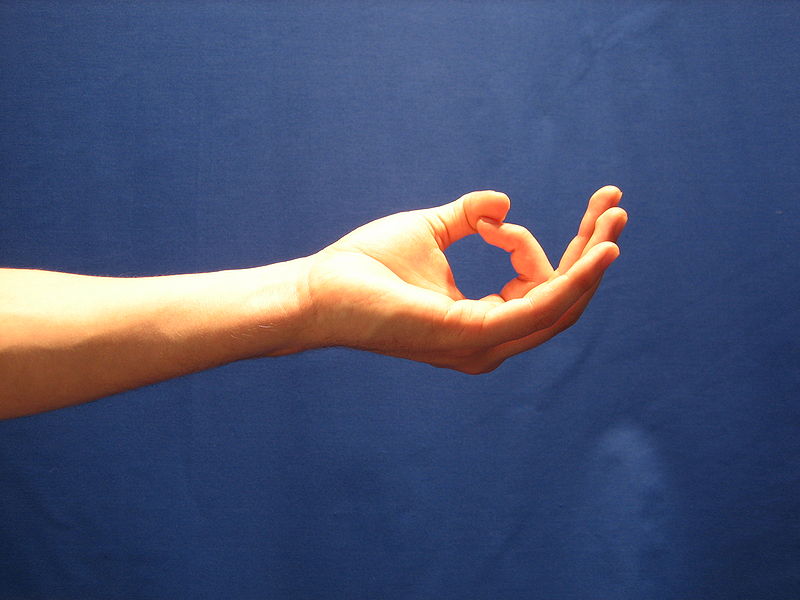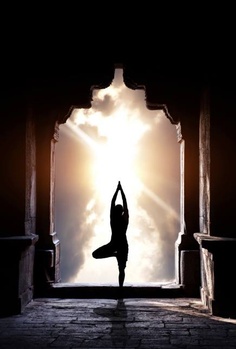Beginner’s Guide to Yoga Breathing Exercises (Pranayama)
Beginner’s Guide to Yoga Breathing Exercises
How to Practice Yoga Pranayama
The vast benefits of yoga pranayama, or yoga breathing exercises, are now starting to be discovered by mainstream society. It is inevitable, to those of us familiar with this profound science, that pranayama will gain equal, if not greater, popularity than the physical yoga exercises (Hatha Yoga Asanas) have done so far. This is because pranayama is absolutely something everyone can practice, regardless of age or physical prowess. If you can breathe, you can do pranayama.
The beauty with yoga breathing is that simple techniques can bestow terrific benefits and that learning and practicing these techniques is something well within reach of us all. Whether you are a beginner or advanced yogi, pranayama is something you will find to be a powerful tool to help you with your spiritual evolution. That being said, there are certain guidelines and recommendations that you should follow with regard to pranayama practice, and in this article I would like to provide those to you.

If you are an advanced yogi, from the point of view of Hatha yoga practice, and you have not done much pranayama, then you should approach this science with the same respect as a beginner would. This is because prana, or life-force, is the vast energy of atoms, and the body’s capacity to handle such energy should be built up gently and systematically over time. Rushing pranayama practice can create imbalances in the systems and other problems, that could easily have been avoided if an intelligent approach had been embraced.
Beginner’s Guide to Yoga Pranayama Practice
- Clothing: Clothing should be loose, specially around the abdomen. This will ensure that the natural movement of the diaphragm is not impeded when doing the breathing exercises.
- Diet: You should not have eaten any heavy meal at least 2-3 hours prior to practicing pranayama. The stomach should be empty. It is fine to sip some water though during the practice to stay hydrated, specially when doing heat generating vigorous exercises. If your diet can consist of light, fresh food that will help the cleansing process as well.
- Time: Dawn is a terrific time to practice yoga and meditation, but this is more so for pranayama practice. This is because the early morning air is fresh and at this time the air contains the most amount of prana. Practicing at this time, will bestow benefits faster. Of course, if this is not feasible, no worries, practice when you can. Here is an article on How to Help You Become an Early Riser.
- Posture: Always sit with your back as straight if possible. In addition, keep the chin slightly tucked in so that the back of the neck is aligned with the spine. This will help the flow of energy up and down the spine and up into the brain region. In addition, this will prevent you from getting dizzy during vigorous exercises.
- Illness: Whether you are a beginner or an advanced practitioner, do not practice any advanced pranayamas while you are unwell. Do the beginner versions of the breathing exercises or choose easy pranayamas to do instead. It is also fine to stop entirely until you have recovered fully.
- Effort: Again, regardless of if you are a beginner or advanced yogi you should never strain when practicing yoga. This is especially true when doing the breathing exercises. As indicated above, pranayama, which means the expansion and control of prana, deals with the nuclear energy of atoms and progress should be made gently and systematically. This is even more applicable for any pranayama that requires you to hold your breath in or out for prolonged periods of time. If at all you feel uncomfortable while practicing a pranayama, stop, take a break and restart again when you feel ready.
- Cautions: Don’t practice any heat generating pranayamas while sitting directly under the hot sun. This can aggravate the heat in the system (pitta). Similarly, choose pranayamas according to conditions and state of your health. In other words, don’t practice Sheetali Pranayama if you are suffering from a cold or chest congestion, etc. The following Overview of Ayurveda can be a helpful guide to you on this topic as well.
- Location: Try to practice is a well ventilated room with plenty of fresh air.
Summary
Yoga Pranayama is perhaps the best part of yoga. All the various types of yoga have contributed to this profound science and the following 2 e-books should give you plenty of techniques to incorporate into your daily practice: Free Online Yoga Pranayamas E-Book and Free Online Yoga Brathing Exercises Videos.
If you are just beginning your yoga practice, definitely incorporate pranayama into it, if you are an adept yogi and have not indulged in pranayama, then it’s overdue that you take advantage of this warehouse of profound wisdom.




Thanks oru pudhiya logathilekulla kalvep poleyanu anik feel cheidhitulladh Himalayan veedhiyiluda njn sanjarichapol pala tharthil Ulla yoga chakra meditations reedhigal adhilooda avar arjichedthitulla power it s
spritul power . edhellam anik. Manasilakan EE site anik valya helpful airunu. ,, ..
Thank you for your kindness and generosity for putting this site together. I had breast cancer this year and I am now doing better. I am having difficulty with some fluid retention under my arm and I am hoping some meditation techniques will help. Also, I am starting your beginners meditation class. Again, thank you.
Hi! I’ve just discovered your site. Thank you! I had surgery for a herniated disc (L5, S1) December 19, 2011; could you recommend anything for me? I am 47 with a sedentary lifestyle (mostly because of the surgery). Please help.
I met with brain heamerage in 2003.I do a lot of walking i the morning and evenings.I have stiffness on my left hand and cannot hold newspaper even for half an hour.I do laum vilaum but avoid Kapa Bhatti for the fear that It may not lead to my fatness.I am 76 plus.What do you suggest for me.
Thanks Anmol ji,Thanks for your guidance for yoga for biggeners.I do laum vilom and avoid kapal bhati because wrong execercie can lead to fatness.I walk a lot still I have flabbiness around abdominal.what safe excercise you suggest for me.I am 76 plus.I had braihemmarage in 2003.and has stiffness on my left hand.
sir, I was operated on my neck because of nerve compression due cervical spondylosis and also my neck and spine will not be in a line.
still can i do pranayama beginners course or any other problems arise
with regards
govind
I’ve never done Yoga Pranayama before, I’ve learned so much from visiting your blog regularly. Thanks a lot.
Hi Anmol,
I just came across your videos in you tube. I think you are doing doing a great job!!
I cannot stop reading your articles. They are so informative.
thanks a ton